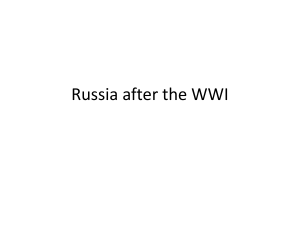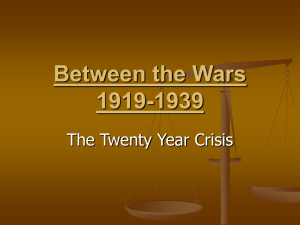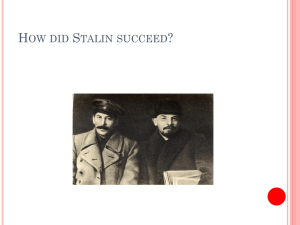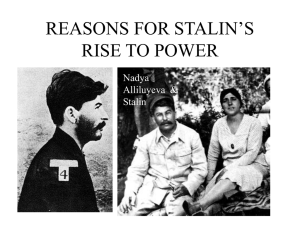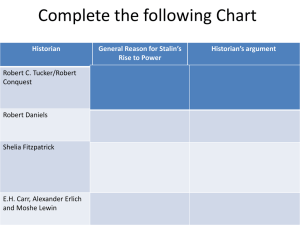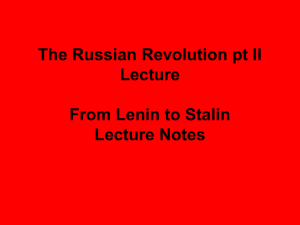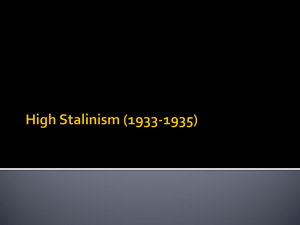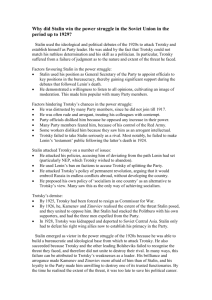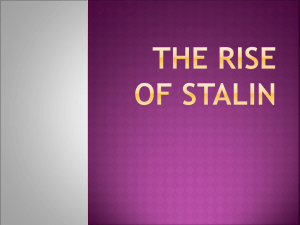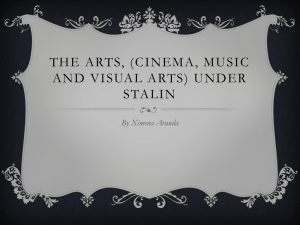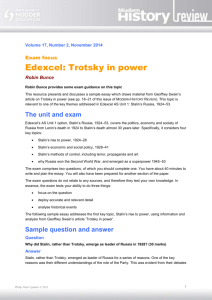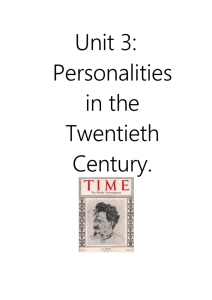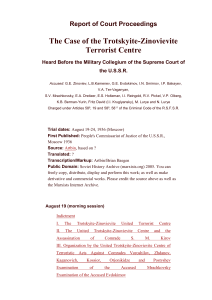The Power Struggle for Control of the USSR
advertisement
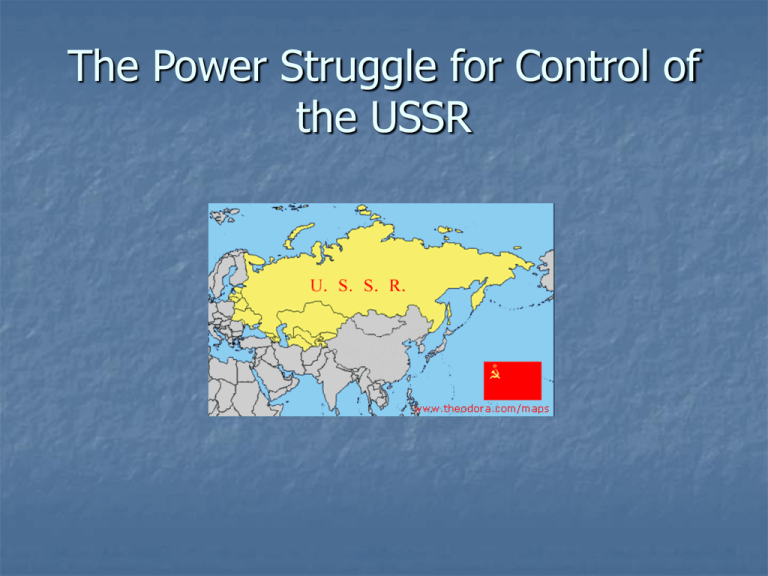
The Power Struggle for Control of the USSR The Main Contenders Stalin: Man of Steel Born as Joseph Dzhugashvili in 1878 or 1879 in Georgia Working class, peasant background Did well at school and gained entrance to a seminary Became a revolutionary and was one of the few who remained in Russia after 1912 He was one of the first on the scene after the February Revolution 1917 Editor of Pravda and gained a seat in the Petrograd Soviet Stalin (2) After October he was made Commissar for the Nationalities Played a vital role in saving Tsaritsyn from the Whites In 1919 Lenin appointed him head of the workers and Peasants’ Inspectorate Was a member of the politburo and was in charge of the orgburo From 1922 he was the General Secretary of the Communist Party Leon Trotsky Born Lev Davidovich Bronstein on 7 November 1879 in the Ukraine Came from a wealthy Jewish farming background Only joined the Bolsheviks in 1917 Intellectual, political writer Expert on Marxism Popular with younger members, students and soldiers Planned the October Revolution Organised the Red Army Trotsky (2) Capable of being arrogant and patronising Suffered from illness from 1923 onwards which meant he missed some important meetings Perhaps too idealistic about having a permanent revolution Named by Lenin as a natural successor but many Bolsheviks feared he would become a dictator The Other Contenders • • Gregory Zinoviev Lev Kamenev Nikolai Bukharin Alexei Rykov Mikhail Tomsky *Left wing *right wing Bukharin Kamenev The issues Dictator or collective leadership Collective leadership was much more in keeping with pure communism NEP and Industrialisation Right wing wanted to keep NEP and left wing wanted rapid industrialisation Permanent Revolution or Socialism in One Country Idealism versus realism Stalin Becomes Party Leader Stalin’s power base Stalin had manoeuvred himself into many different positions: Member of the politburo Leader of the orgburo The secretariat He was able to organise meetings and appoint his supporters to key positions Stalin was able to choose delegates from the bottom up and control party membership Stalin banned certain elements who would support Trotsky Powerbases of the others Trotsky had the support of students and soldiers in the Red Army Kamenev had a powerbase in Moscow Zinoviev had a powerbase in Leningrad Bukharin was popular with the youth element – named the ‘golden boy’ by Lenin Could Stalin have been stopped? Had Lenin not died he undoubtedly would have been sacked from the secretariat Had Lenin not banned factions in 1921 Stalin could have been curbed at a later date During the power struggle the others had the opportunity to unite against Stalin but they underestimated him Kamenev and Zinoviev had the opportunity to read out Lenin’s testament about Stalin but did not (it was also negative about them) Trotsky did not speak out about Stalin because he was loyal to the Party and had voted to end factions in 1921 How did Stalin win out? Stalin portrayed himself as Lenin’s keeper from the funeral onwards Stalin changed his theories to keep the majority happy. He always seemed to get most votes. He appointed supporters from the bottom up over a number of years – often with the compliance of other contenders, desperate to get rid of Trotsky He initially allied with the Party against Trotsky and had him demoted. He later did the same to the others. Stalin Wins Out (2) Dzerzhinsky had never liked Stalin, but he died in 1926 giving Stalin the opportunity to infiltrate the Cheka Stalin’s view of Socialism in One Country was realistic to many by the 1920s There were intrinsic weaknesses within the opposition – they were not great leaders of men In December 1929 Stalin was now the undisputed leader of the USSR What happened to the contenders? From 1925 Trotsky gradually lost his posts in the Party Trotsky, Kamenev and Zinoviev were expelled from the party in 1927 as a punishment for campaigning for more democracy In 1928 kamanev and Zinoviev were readmitted after recanting their views In 1929 Trotsky was put to exile under Stalin’s orders After moving around Trotsky eventually ended up in Mexico and was assassinated in August 1940 The Fate of Contenders (2) Bukharin, Tomsky and Rykov initially retained positions in government In 1929 they were expelled from the Party All three later recanted their views and were re-admitted as party members but Bukharin was tried and executed in the 1930s The end of an era
